Are you finding unexplained holes in your yard with no soil mounds? This can indeed be a source of concern and curiosity. These holes might indicate the presence of wildlife or peculiar environmental conditions, and finding the cause can be tricky, due to the lack of visible clues.
In this article, we’ll explore possible culprits behind the mysterious holes in your yard. By the end of this guide, you’ll have an understanding of how to effectively identify and manage the holes in your yard with no mounds.
1. Voles
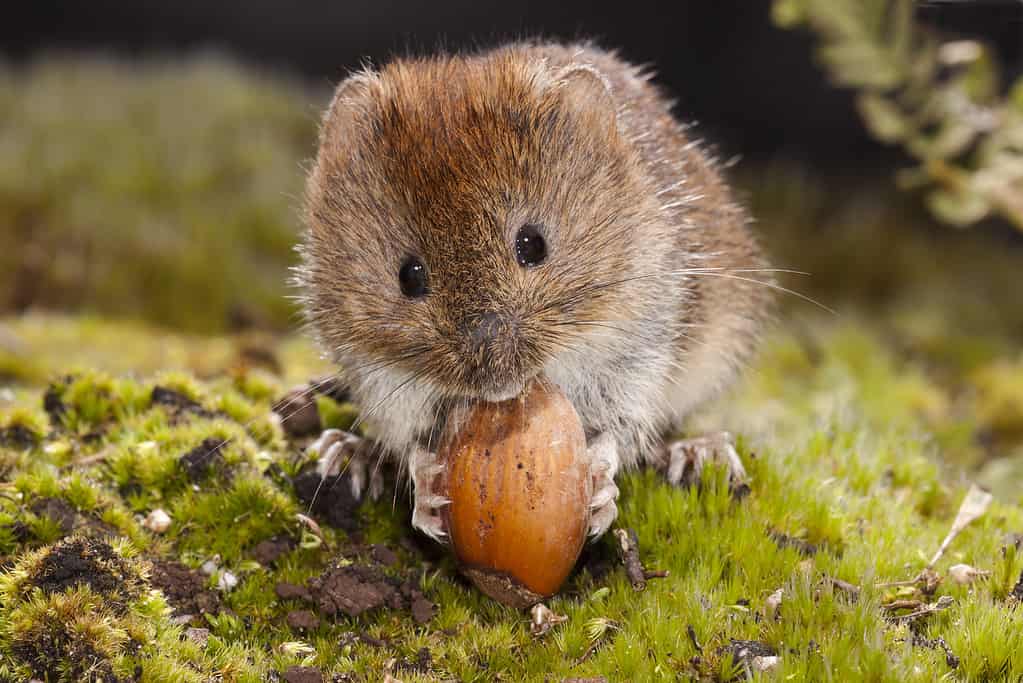
Voles are a small burrowing rodent that only lives for up to 6 months.
©iStock.com/AGAMI stock
Holes in your yard could be the work of voles — small and mighty creatures that can cause significant damage to your yard. Voles are often mistaken for field mice.
Voles can be identified due to their rounded ears, small eyes, and short tails, and they’re really good at creating intricate tunnel systems without making noticeable mounds above ground. They come in various colors like brown, grey, red, white, and chestnut. These animals have a very short lifespan, only living for about three to six months.
Voles can thrive in a variety of different ecosystems, such as steppes, meadows, prairies, and forests. That said, they prefer areas with many plants that offer them protection and materials for making nests. They’re social creatures, living in family groups of around five individuals.
Voles eat a variety of different foods such as tubers, fruits, nuts, bark, seeds, roots, bulbs, and green plants like grass and clover. They forage near the surface, leaving behind a row of holes as evidence of their activity, and they’re known to be pretty calm in temperament.
Signs of Vole Activity
You can identify voles by the shallow, snakelike tunnels and the absence of mounds around the holes. If you see partially eaten root vegetables and chewed-up bark near the base of trees and shrubs, with quarter-inch side-by-side grooves in the wood, you are likely dealing with voles.
Preventive Measures and Solutions
To keep voles away, you should keep your yard clean, remove potential hiding places, and protect young trees by wrapping the lower trunk with chew-proof material. Repellents and trapping can be effective, and having an outdoor cat or dog can also help control vole populations.
2. Chipmunks
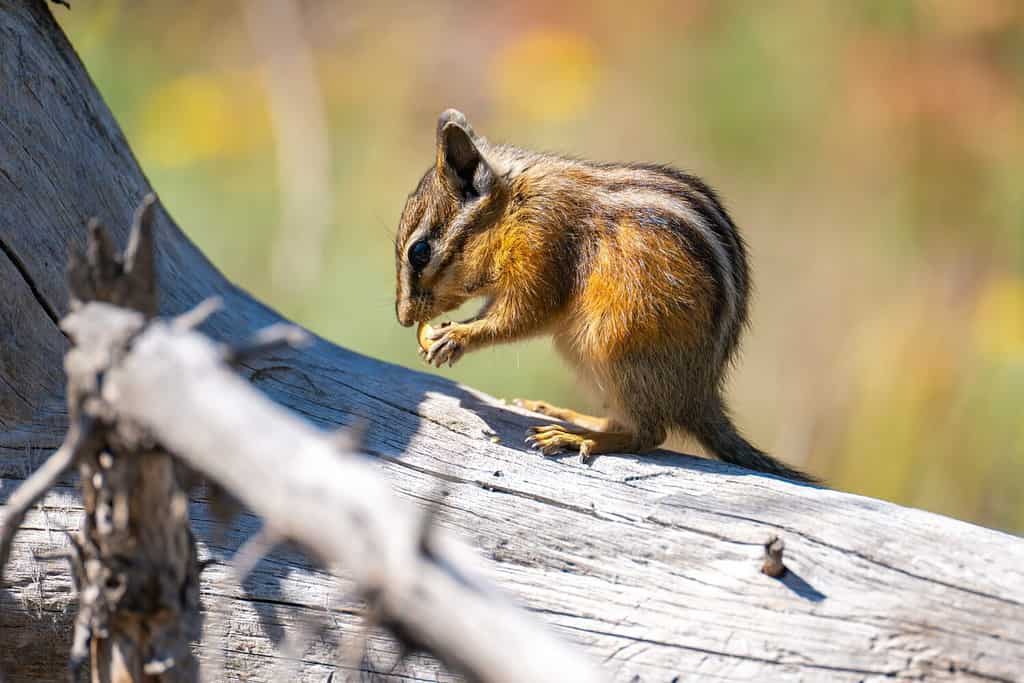
The burrows of chipmunks are not harmful to your property.
©Iv-olga/Shutterstock.com
Chipmunks are quite the masters at burrowing. They’ll go unnoticed, leaving no trace in your yard. So, if you start finding mysterious holes with no mounds in your yard, chipmunks could be the culprit.
Chipmunks are small striped rodents, only weighing 2 to 5 ounces. They are nimble with sharp claws that are ideal for digging those burrows. But, these creatures don’t create noticeable mounds, which helps them stay unnoticed and avoid predators.
Surprisingly, chipmunks are omnivores, feeding on various seeds, fruits, nuts, insects, worms, bird eggs, and even frogs or small birds.
Signs of Chipmunk Activity
Thanks to their subtle nature, identifying chipmunk burrows can be very difficult. Chipmunks dig complex tunneling systems that they use to find food and for nesting. The openings to these tunnels are small and lack mounds, so you are going to have to do some pocking around to find them. Chipmunk burrows may have several entrances around 2 inches wide.
Preventive Measures and Solutions
Chipmunk holes are very unlikely to damage your property, so The Humane Society recommends just keeping these cute rodents around!
That said, if you want to get rid of them, you can use the following tips:
- Use an L-shaped footer that stops them from burrowing near your foundation and sidewalks.
- Clear out wood or rock piles and cut back plantings around your area of concern.
- Plant your bulbs beneath a wire or plastic screen, preventing chipmunks from digging.
Unfortunately, there’s no specific ‘chipmunk’ repellent, but some squirrel repellents might do the trick. Choosing less appealing plants and bulbs, like daffodils or Allium, can also naturally keep them at bay.
3. Ground Squirrels
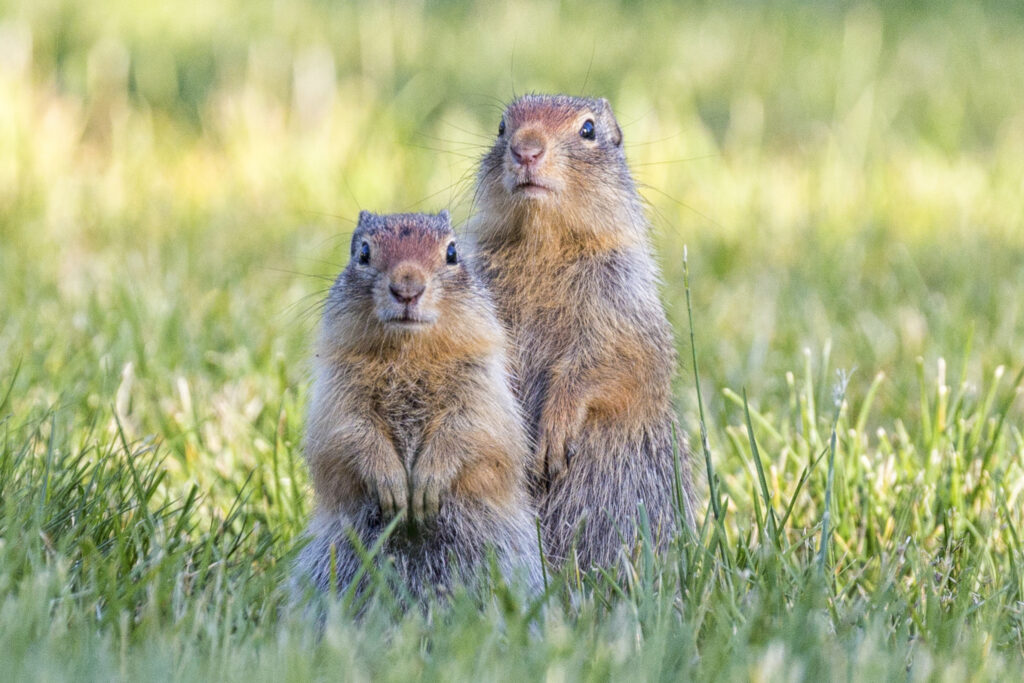
Similar to marmots or groundhogs, ground squirrels live in extensive underground burrows.
©Cora Hiranaka/Shutterstock.com
Ground squirrels are experts in making cozy homes underground, crafting extensive burrows, and leaving no trace above the ground. These rodents look very similar to chipmunks, but they do not have stripes along their bodies. Ground squirrels come in various colors and patterns and have short legs and strong claws, perfect for digging. Their physical features allow them to craft homes underground without disturbing the surface — the invisible architects of the animal kingdom.
Ground squirrels are diurnal, meaning they are active during the day and sleep at night. While some species hibernate through winter, others stay active all year, keeping warm in their underground burrows.
They are omnivores with a varied diet, munching on plants, fruits, insects, and sometimes even small animals. Their diverse and discreet eating habits help them live unnoticed in various environments, making sure they don’t leave mounds of soil around when they are foraging.
Signs of Ground Squirrel Activity
If you spot clean, distinct holes with worn grass around them in your yard, you might be hosting ground squirrels. These holes clearly indicate their presence and can cause problems like ground collapse and tripping hazards in your garden. Another telltale sign of ground squirrels is garden plants dying. These rodents will dig tunnels under your garden, which dries out the roots of the plants, eventually killing them. When ground squirrels burrow under your home or sidewalks, it can cause severe and expensive foundational issues.
Preventive Measures and Solutions
If ground squirrels are burrowing in your yard, you’ll need to act fast to get rid of them. We recommend contacting a professional to help deal with these subtle excavators because trapping them with their extensive burrows is quite a challenge. A professional pest removal company will not only help eliminate the ground squirrels in your yard, but they will also help prevent future infestations.
4. Raccoons
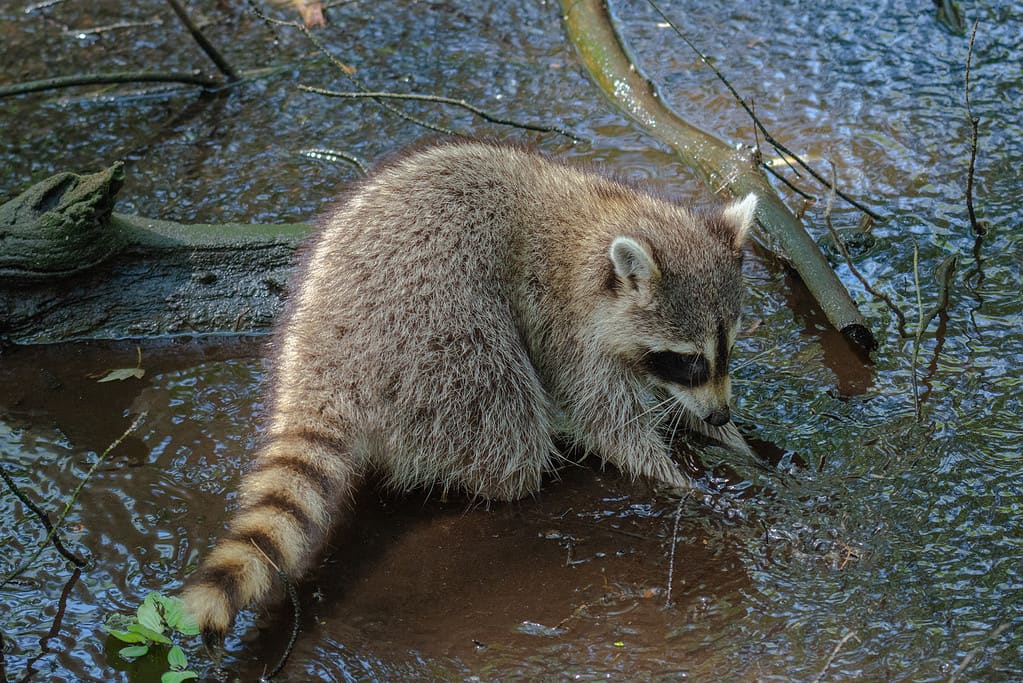
During the winter, raccoons will dig burrows to stay warm.
©ad-e-motion/iStock via Getty Images
Raccoons are clever little beings known for their discreet digging abilities, leaving behind holes without creating noticeable mounds in your yard. They have these nimble hands, allowing them to dig and forage efficiently without disturbing the surrounding area. This makes raccoon burrows incredibly difficult to spot.
They are nocturnal creatures and prefer to be active at night, so they spend most of the day snoozing in their burrows, especially during the winter. Raccoons will also dig holes in your yard in search of grubs and worms. While they don’t leave behind mounds, these holes are easier to spot than some others on this list.
Raccoons eat many different things, including insects, fish, dead animals, fruits, veggies, and human trash.
Signs of Raccoon Activity
A clear sign that a raccoon is burrowing or searching for food in your yard is a scatter of dirt and grass throughout your yard. When searching for insects, raccoons will dig several small holes around your yard, tearing up your lawn in the process.
Preventive Measures and Solutions
To keep these little excavators at bay, you should consider eliminating their food sources. Raccoons dig in your lawn in search of grubs and worms, so using pesticides and preventive measures to get rid of these grubs will likely keep raccoons away. Another way to ward off raccoons is to install mesh wire fencing around your yard. If all else fails, consider hiring a professional to trap and remove raccoons.
5. Earthworms
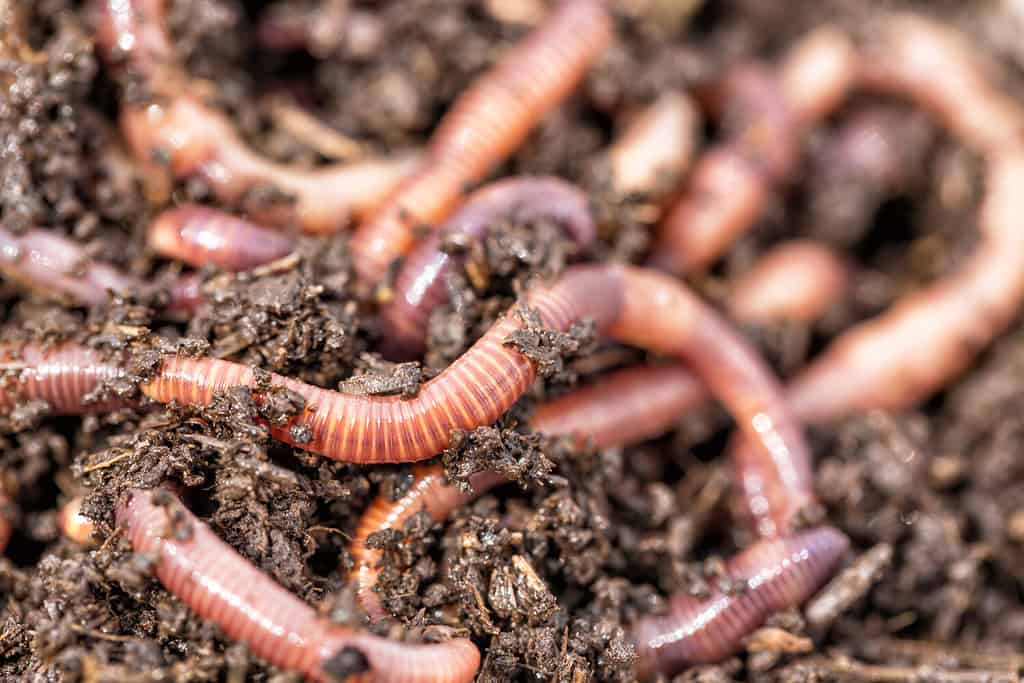
A sign of healthy soil, earthworms are beneficial to your yard.
©Nick N A/Shutterstock.com
Earthworms are the subterranean sculptors. The best friends of gardeners play crucial roles in maintaining your yard, enriching the soil, and aiding plant growth without leaving much of a trace. So, if you notice tiny holes in your yard without mounds, it could be the work of earthworms.
Earthworms are small and either brown or reddish. They live in the top layers of the soil, creating holes but not leaving much of a mess behind. They consume and process soil and organic matter, leaving behind nutrient-rich droppings beneficial for your plants and the soil.
Earthworms thrive in healthy, organic-rich soil and consume soil and decomposed plant material, turning it into nutritious droppings that enrich the soil.
Signs of Their Presence
You will rarely see earthworms, as they spend most of their time below the surface of your lawn, but occasionally, when the soil is wet, they may emerge to the surface, leaving behind small amounts of droppings and tiny holes.
Should You Manage Earthworm Activity
Earthworms are an important part of your yard’s ecosystem, helping to fertilize your lawn. Despite what you may think, they pose no threat to the structural integrity of your lawn and actually create pathways for roots in plants and keep the soil well-draining. Earthworms are a sign of healthy soil, so you don’t need to call pest control to remove them from your property.
6. Birds
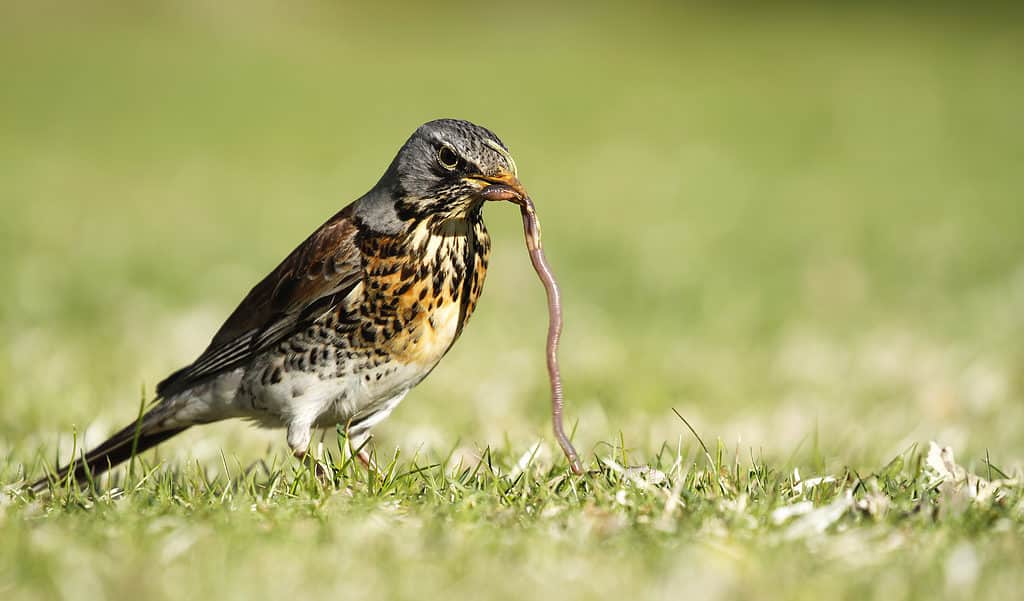
In search of food, birds may dig small holes in your yard.
©Jukka Palm/Shutterstock.com
Birds, such as robins, sparrows, and blackbirds, are other creatures that may create holes in your yard with no mounds. Unlike many other animals that dig holes for burrows, birds are typically on a mission, hunting for their next meal! They are generally looking for earthworms, grubs, insects, or seeds hidden in your soil.
Signs of Their Presence
These bird holes are small and shallow, usually around half an inch to two inches in diameter. When digging into your yard, these birds will peck at the ground, flipping your turf with their beaks. This will leave behind a pattern of multiple dispersed holes across your lawn with no mounds of soil around them.
Solutions and Preventive Measures
It might seem like the birds are causing a mess in your yard, but they’re actually doing you a favor! By pecking around, they help control insect populations, maintaining a balance in your yard’s ecosystem. So, seeing a lot of birds in your yard might be a sign of an underlying pest problem. Instead of shooing them away, it might be worth checking if there are insect infestations that need addressing.
That said, bird activity could be messing up the aesthetic of your lawn. Here are a few suggestions for humanely getting rid of birds from your yard:
- Use Visual or Auditory Deterrents: Reflective tape, wind chimes, or other shiny and noisy objects can help keep the birds at bay in your yard.
- Employ Bird-Friendly Netting: Protect specific areas of your lawn by covering them with netting. This will prevent the birds from reaching the soil and causing them no harm.
- Address Underlying Pest Problems: Investigate and treat any potential insect infestations in your yard. This will not only protect your lawn but also reduce the food source attracting the birds.
7. Ground Bees
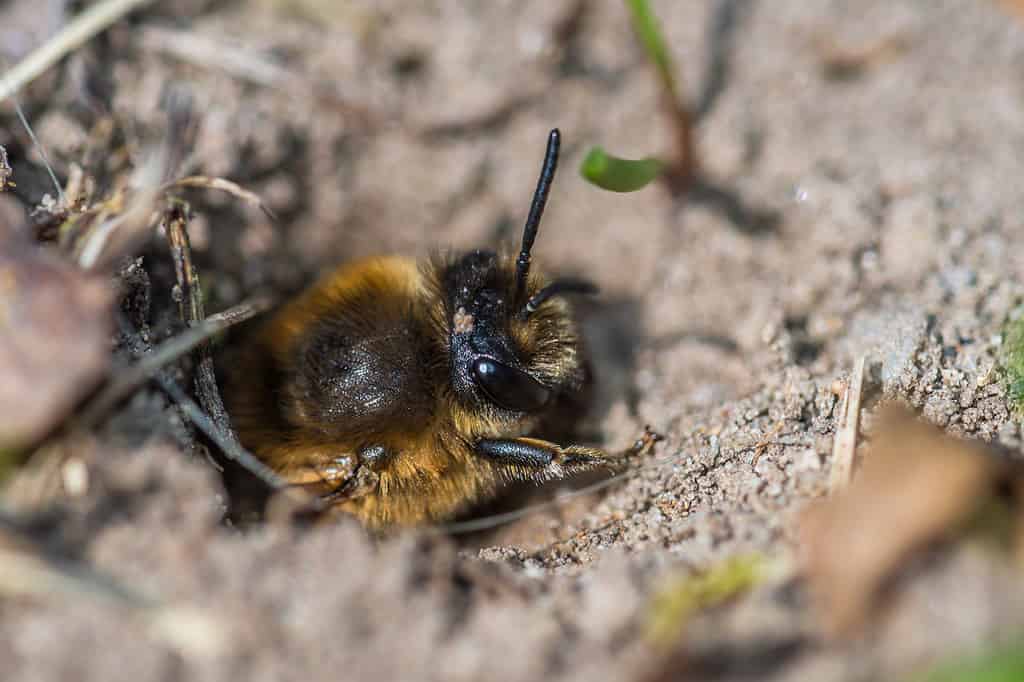
Mining bees live by themselves in small underground burrows.
©StGrafix/Shutterstock.com
Ground bees, also known as mining bees, are intriguing solitary pollinators, well-known for digging unnoticeable holes. While they have a stinger, they rarely use them, only stinging when severely threatened. This makes ground bees a welcome visitor to your gardens and yards.
Ground bees are quite fascinating. While normal honey bees live in hives with over 50,000 individuals, ground bees are solitary, living on their own. They are fine-tuned to dig swiftly and subtly, leaving behind little trace of their burrows.
These bees favor environments where they can remain unseen. You might see them in large numbers around nesting sites, but each female bee is independent, attending to her own nest and avoiding any behavior that might disclose her presence.
Ground bees are nectar feeders and indispensable pollinators. They go from flower to flower, pollinating them as they collect nectar. This activity plays a vital role in the ecosystem, making ground bees an extremely important species.
Signs of Ground Bee Activity
Ground bee holes are very difficult to identify and will have no mounds. To spot them, you should look for small holes with barely visible fine soil granules around them. These subtle signs can clue you in on their secretive lifestyles and let you know if these covert architects have visited your space.
Preventive Measures and Solutions
Ground bees are an important part of our ecosystem, so you should avoid removing them from your yard unless absolutely necessary. In most cases, it is best to just leave them alone and allow them to pollinate. As we mentioned, they rarely sting.
If you’re looking to deter ground bees from your yard, you can do so in a humane and eco-friendly way. Sprinkle cinnamon in the soil or spray a mixture of water and white vinegar around the holes. This strong smell will likely deter them, forcing them to migrate and look for a new home.
8. Mole Crickets
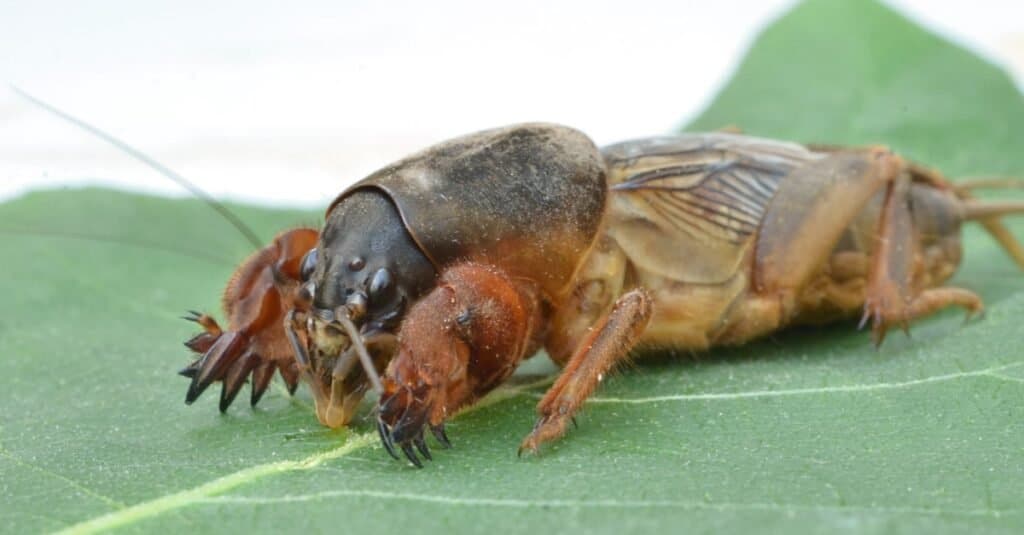
With specialized front claws, mole crickets can dig extensive underground holes with no mounds.
©muroPhotographer/Shutterstock.com
Mole Crickets are native to South America but are now a widespread insect species in the USA, from Nebraska to Texas, and Florida to Massachusetts. This species has even made its way to Australia! They are invasive, being brought over accidentally from South America by boat. In some areas, they have become a major problem, digging extensive burrows and damaging lawns. They’re notorious for their little discreet holes in the yard, constructing vast underground tunnels for shelter.
Mole Crickets have special claws that allow them to dig efficiently through the lawn surface, making tunnels without piling up much earth on top. Even with their small size, they can significantly weaken and damage your yard because of their extensive tunneling activity.
The tunnels that mole crickets dig are pretty deep, going up to 30 inches underground and extending 20 feet. These tunnels raise the roots and soil in your yard, killing your grass and drying out shrubs and bushes.
Signs of Mole Crickets Activity
Seeing small holes with hardly any earth left in a mound on the surface? This may be mole crickets! The grass above mole cricket tunnels will also eventually die, revealing the extensive burrowing systems. But these holes can be misleading, hiding extensive underground tunnels. A cool trick to find out if you are dealing with mole crickets is the soap test. Pour diluted dish soap and water into one of the holes. If there are mole crickets there, they’ll surface to avoid drowning!
Preventive Measures and Solutions
To avoid Mole Crickets, think about what draws them. Managing thatch on your lawn and avoiding overwatering or excessive fertilizer could make your yard less attractive to them. If it is too late and your lawn is already infested with mole crickets, you can pour a pesticide into their burrow. This will likely do the trick, but if you continue having trouble with mole crickets, we recommend contacting pest control to help you out.
Other Causes of Holes Without Mounds
Most of the time, animals are the reason you have holes in your yard, but there are a few other issues that could be causing the problem.
9. Decaying Roots

As roots decay, they can create large holes in your yard.
©VASYL MYKHAILENKO/iStock via Getty Images
Over time, the roots of your garden plants may decay, leaving small, unassuming holes in your soil. Filling in these holes is usually pretty easy and simple, but If many holes are popping up in your yard, you should consult with a certified arborist. They’ll assess the health of your trees and offer recommendations to keep your yard healthy.
10. Drainage Issues
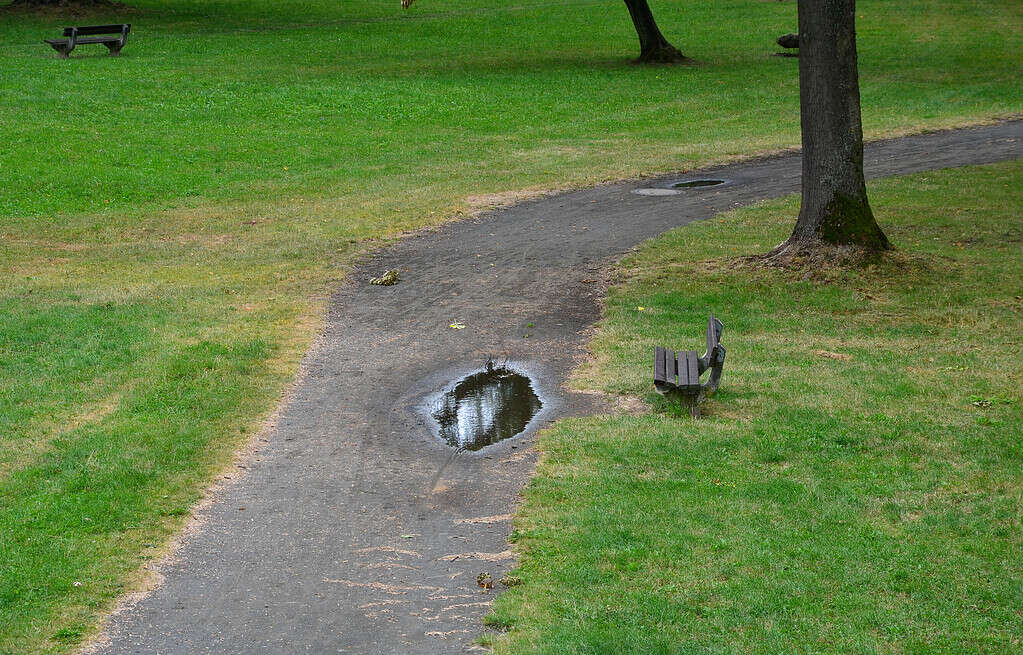
If your yard is uneven, water may collect in certain areas, forming holes.
©iStock.com/beekeepx
Drainage issues are another cause of holes in your yard with no mounds. When water doesn’t drain properly, it creates little holes in the soil. It’s crucial to address areas where water seems to stagnate. Installing a drainage system or re-grading certain areas of your yard can encourage proper water flow, preventing hole formation and promoting a healthier lawn.
11. Underground Pipes or Cables

If plumbing systems are not properly covered, the ground can sink, forming holes in your yard.
©Aleksandra Cheremisova/Shutterstock.com
Underground pipes or cables can contribute to small holes in your yard, particularly around areas where you’ve buried utilities like gas, water, or electric lines. If you suspect this is causing holes, it’s essential to get in touch with your local utility company for an inspection. They’ll identify any issues with the underground utilities and fix them, ensuring the safety and integrity of your yard.
Summary of Holes in Your Yard With No Mounds: 11 Things It Could Be
| Number | Culprit |
|---|---|
| 1. | Voles |
| 2. | Chipmunks |
| 3. | Ground Squirrels |
| 4. | Raccoons |
| 5. | Earthworms |
| 6. | Birds |
| 7. | Mining Bees |
| 8. | Mole Crickets |
| 9. | Decaying Roots |
| 10. | Drainage Issues |
| 11. | Underground Pipes or Cables |
The photo featured at the top of this post is © muroPhotographer/Shutterstock.com
Thank you for reading! Have some feedback for us? Contact the AZ Animals editorial team.







